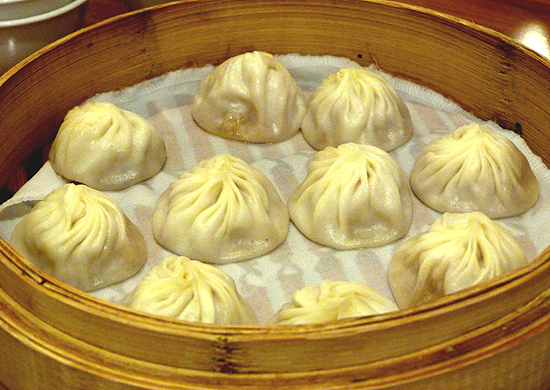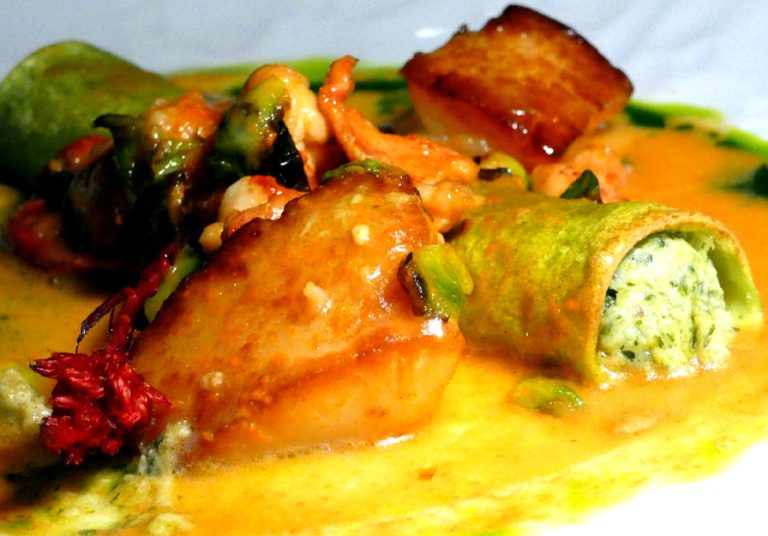Published with permission from LuxuryWeb.com
The culinary arts have been an important part of Chinese culture; with many recipes being passed down through generations of master chefs in the region.
Much of the “Chinese food” we consume in the U.S. and in Western countries is an Americanized version of Cantonese cookery with some Szechwan and Hunan dishes thrown in for good measure. That is because many of the Chinese that came to build the American railroads in the 19th century were from the Guangdong (Canton) province and brought with them traditional cooking methods and dishes.
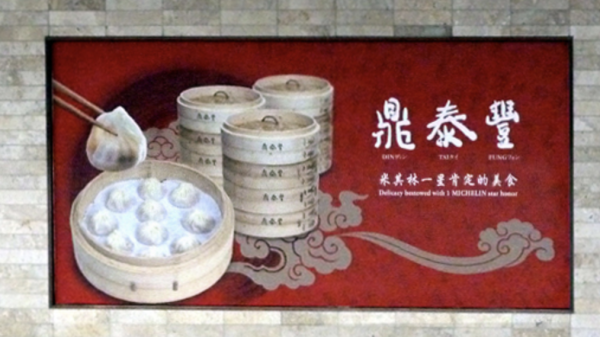
It has only recently been — especially right after Hong Kong was ceded back to mainland China by the British and the exodus of the affluent city residents — that we saw many new Chinese restaurants opening up in the U.S., most owned and operated by Hong Kong expats.
Rooted in history
While visiting the Chinatowns of cities such as Bangkok, London, and New York City, I tried and tasted lovely dumplings, shiaomai (shumai), cheung fun, gai lan (Chinese broccoli) with oyster sauce, spare ribs with black bean sauce and ha gao; so during my trip to Taiwan I knew that I had to visit at least one restaurant to taste their dumplings — and especially their Xiao Long Baos (known in the English speaking world as soup dumplings or juicy little buns) for which they are world-famous.
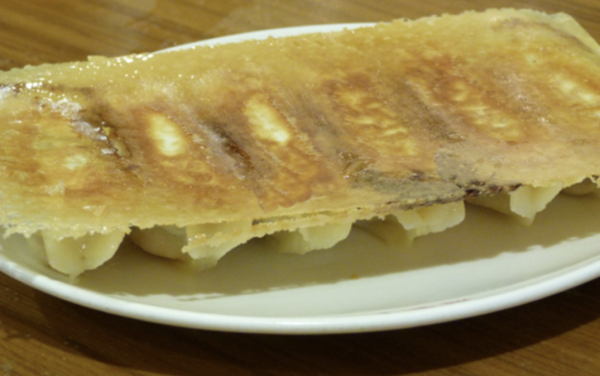
Success
You are now signed up for our newsletter
Success
Check your email to complete sign up
Xiao Long Bao is a steamed baozi; a specialty from Nanxiang (a suburb of Shanghai) and hail from the Wuxi area of China. These little delights are typically steamed in small bamboo baskets and pinched at the crown prior to steaming so the skin has a circular cascade of folds. This particular restaurant’s version famously uses 18 folds to make their dumplings, with the result being a tender, smooth, and somewhat translucent pocket of soupy goodness. The dumplings are created by wrapping aspic inside the skin, alongside the ground pork and vegetable filling before the dumplings are steamed on a bed of cabbage leaves.
To enjoy them, the buns are sometimes dipped in Zhenjiang vinegar with a little soy sauce and served with slivered fresh ginger, or can be enjoyed by themselves. In Canton and the Western world, they are frequently served as part of Cantonese yum cha (tea lunch).
A culinary delight
Believe me, my journey to Taipei was an outstanding culinary experience. Many of this restaurant’s branches are famous for making the best Xiao Long Bao in Taipei (where the company started as a cooking oil seller); though they have now also opened branches in other cities around the world with large Chinese populations — including the West Coast of the U.S — with the best dim-sum chefs considered the ones trained in these restaurants.
Two Honk Kong branches were awarded one Michelin star each, and a third a Bib Gourmand; what other chain restaurant anywhere in the world can say they have Michelin stars under their belt?
We were in Taipei on a Sunday, and the first restaurant we tried did not have any vacancy. It was not only jam-packed, but there was a long waiting line out the door, sprawling into the street. So it then that we decided we should try the soup dumplings at Taipei 101 — a much larger venue with a central glass-enclosed working space where Xiao Long Baos and other dumplings and pot-stickers are masterfully created by cooks dressed in all white surgical-style masks, caps and gowns.
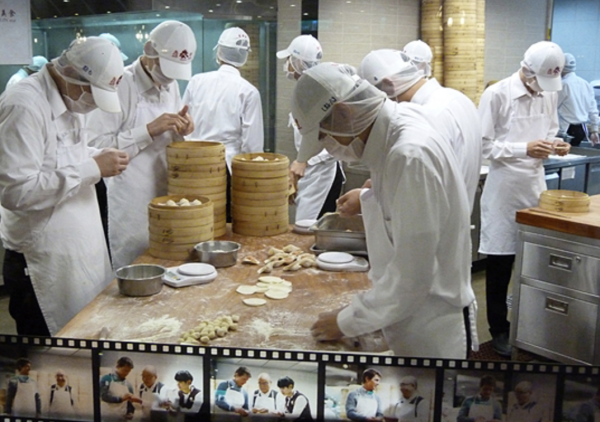
Described by some less knowledgeable tourists as a “fast food joint” this restaurant is, in reality, a culinary treasure of Taipei. If it seems I’m gushing… please excuse me; I had one of the best meals here, above and beyond any expectations, and as good as any Michelin-stared restaurant I have been to. Note that I have eaten at numerous one, two, and three-starred establishments, and many more Bib Gourmands. The service was swift, polite, excellently attentive, and multi-lingual. The Xiao Long Bao, shiaomai, buns and pot-stickers were to die for.
We started with a plate of Spicy Pickled Cucumber; it was fresh, cool and bathed in a hot chili-oil vinaigrette dressing — a great way to stimulate the palate. Next, came a bowl of Noodles with House Special Spicy Sauce, they were not as mouth-tingling as the cucumber, but certainly spicy enough.
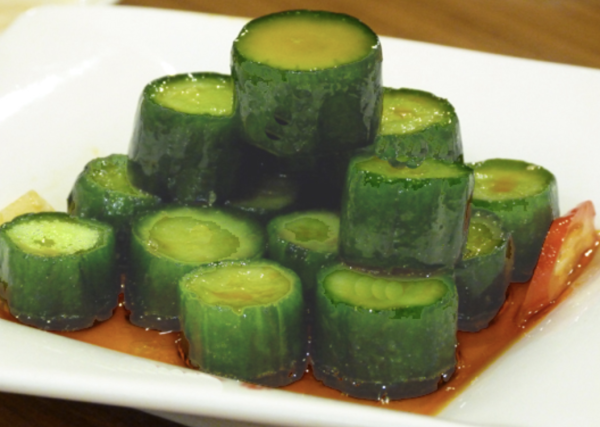
Then, for the star dish: A steamer basket of pork-filled Xiao Long Bao, their signature dish, followed. It was pure delight! Spicy Shrimp and Pork Wonton came together with the pork Xiao Long Bao, creating a balance of taste between the subtle soup dumplings and the spicy wonton; a perfect bite.
Grilled Prawn Pot-Stickers and Steamed Shrimp and Pork Shiao Mai followed shortly after, but at this point, we were almost full. The grilled prawn dumplings had an interesting appearance; the individual pot-stickers were joined together by a very thin, crispy layer of buttery pastry, and they had to be snapped apart to be shared amongst the group.
But, as Chinese tradition dictates, to make sure we were absolutely full, a soup (braised beef slices served with noodles and scallions) was served last.

During the meal, we were offered a light Taiwanese lager that was cold and slightly bitter — almost reminiscent of a Belgian lager, but my favorite was the jasmine tea offered alongside the meal.
In conclusion: if you love good food and you’re in Taipei, then you owe it to yourself to make your way to one of these famous restaurants. Ignore anything that isn’t a dumpling, and prepare yourself for an outstanding culinary experience.
Visit LuxuryWeb.com to see the original article, and more.



